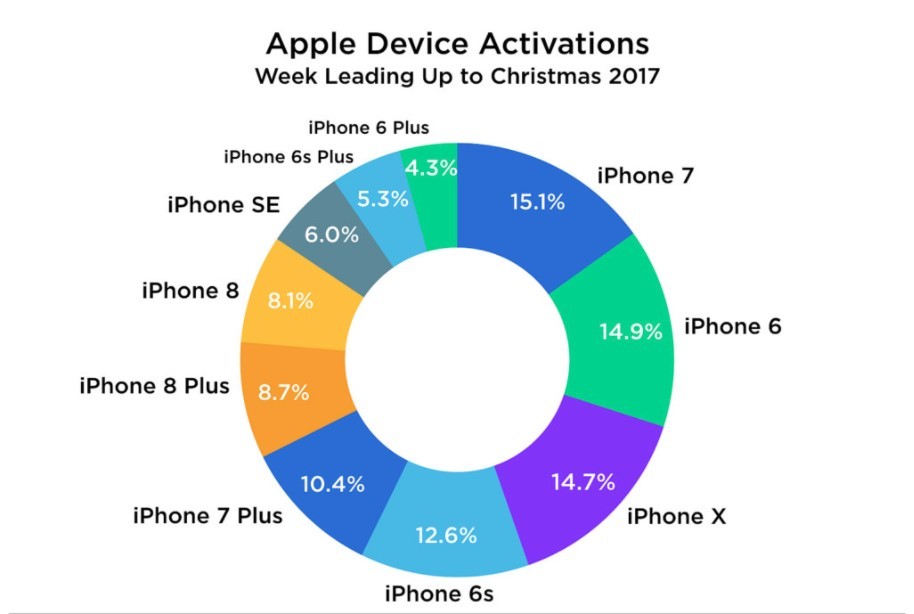Snap, under fire, opens up
Snap, the company behind Snapchat, is clearly feeling the pressure: it's reportedly developing a new format called "Stories Everywhere" that would allow users to embed stories, and even bring them to other apps and platforms — including potentially the entire snap feed.
For a company that was adamant for so long that it was winning in the story format, it's something of a capitulation that reminds me of how BlackBerry only opened up its BBM messaging app to wider platforms when it was clearly losing in the messaging tug of war.
Instagram has surged ahead with stories. With more than 300 million active users, that's over double the users of Snapchat and timed extremely poorly, given the company went public just months ago and needs to perform for investors.
It's unclear what Snap's final implementation would look like, but off the back of news about the company needing to dump hundreds of thousands of Spectacles, and pushing out a full reboot of the app, it's clear that no cow is sacred anymore.
I've been off Snapchat for a long time, but checked in when my app received the redesign a few weeks ago and was surprised to see they've made it harder to use, rather than easier — it's more convoluted than ever to jump into a story from just a friend, and the clickbait in Discover is... thirstier than ever.
With rumors that Google offered to acquire the company for up to $30 billion, it makes me wonder how much better it might perform within a giant like Google, which actually has platform reach already.
It's clear that Snapchat has saturated its market and is struggling to find new people — just like Twitter — but maintains that it's for "everyone" even though there's little likeliness it could ever reach 1 billion users. The last few quarters have been disappointing, but investors will need to get used to the simple reality that no companies are likely to see Facebook-level reach again.
Snap's intellectual property appeared to be ephemerality, but that's been stolen almost entirely at this point, and improved upon by competitors. The real gold is how loyal Snap users tend to be, with earlier reports indicating most users open the app for more than 30 minutes a day.
There are hundreds of Snapchat takes out there, but I'll simply say this: Snap is burning money at a rate of $1.1 billion a year, and has $2.8 billion on hand. That gives the company ample time to figure out things, pivot, and experiment, but it isn't that long to find a monetization strategy. I'll be surprised if the company stays independent at the end of it.
Apple's Christmas was huge, but...

Interesting statistics out of Flurry, an analytics tool with about 2.1 billion data points on devices: Apple had a great holiday season — thanks to the iPhone 6 and 7, not Apple's newer phones.
We won't hear official iPhone X/8 sales statistics until Apple earnings, but analysts are already dialing back projections for the latest iPhones and it's a curious change if these statistics are to be believed.
According to Flurry, just 14.7% of all sales were iPhone X, while iPhone 6 made up 14.9% and iPhone 7 was at 15.1% — the opposite of the 'killer' new phone almost anyone expected. It isn't all that surprising, however, given the iPhone X's price.
Apple took a massive risk with the iPhone X, trying to push its market to a higher price point and convince them of the 'future' but clearly knew this was an outcome when it shipped a iPhone 8 as well as keeping the iPhone 7 on the market.
The iPhone now offers a bunch of price points for the first time (and a fairly confusing product line to boot) meaning that consumers appear to be choosing what suits their wallet — the iPhone 7. I doubt Apple even expected the iPhone X to be the top-seller, at least at first, but pushes consumers down the funnel if they can't afford the top-tier model.
One other factor I believe is in play here that should not be discounted: most people are perfectly happy with their phones. As we saw with the PC a decade ago, smartphones are now topping out — they're mostly the same year-on-year, and consumers can use them for much longer without replacing them.
I wouldn't be surprised if replacement cycles, after 2017, begin slipping out to 3+ years, as people realize that newer models bring increasingly diminishing improvements.
Just like we saw in the PC with dual core, then quad-core processors, at a certain point it became iterative and 'boring' — just a part of everyday life.
Tab Dump
Robots are coming and Sweden is fine
Interesting insight into a country that has a fully-fledged social welfare system, and how that is changing people's reactions to robots taking their jobs.
The lonely future of buying stuff
In a decade, shopping will be fully automated. Your predictions will surface up the exact shoes you like, your favorite food and the perfect mix for tonight. Will life be boring?
What Amazon is paying people that build Alexa Skills
Spoiler: not much. Be warned, this link has an autoplay video, but is an interesting read nonetheless.
